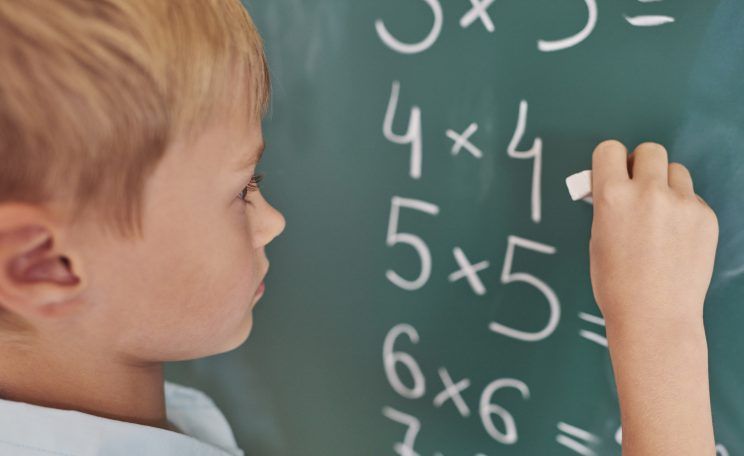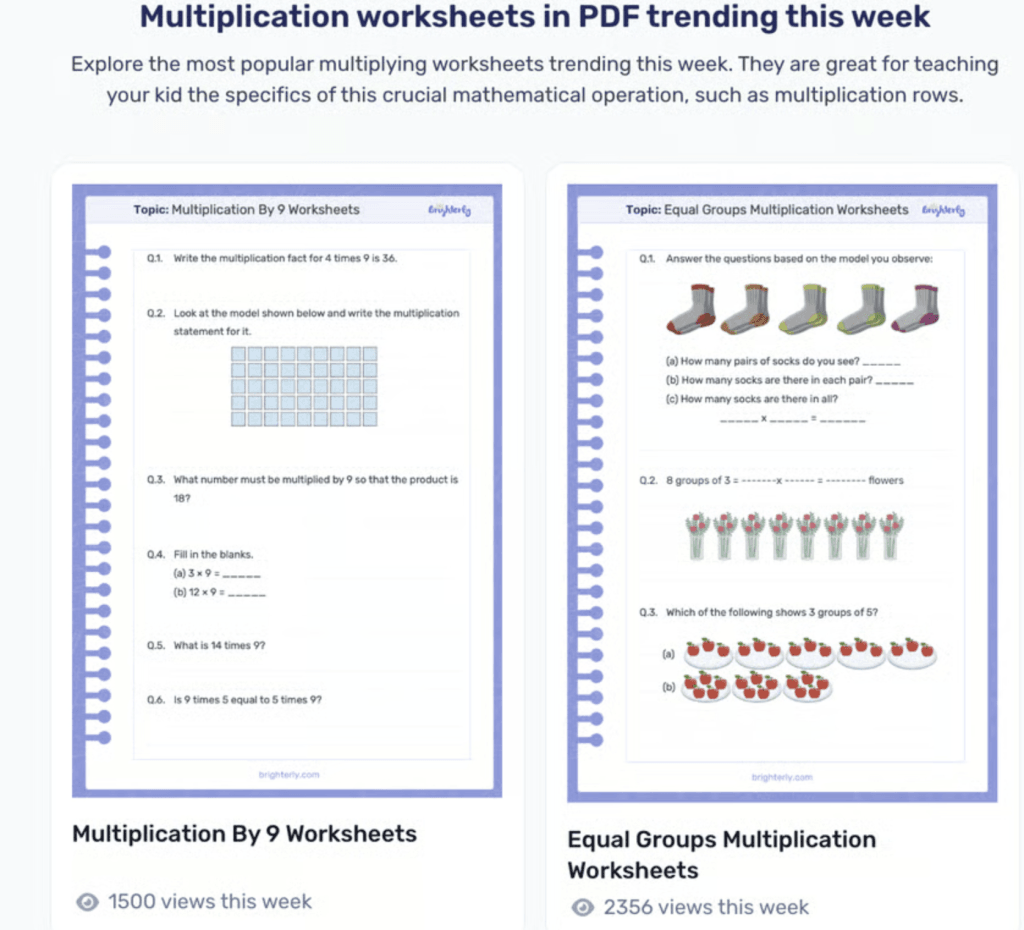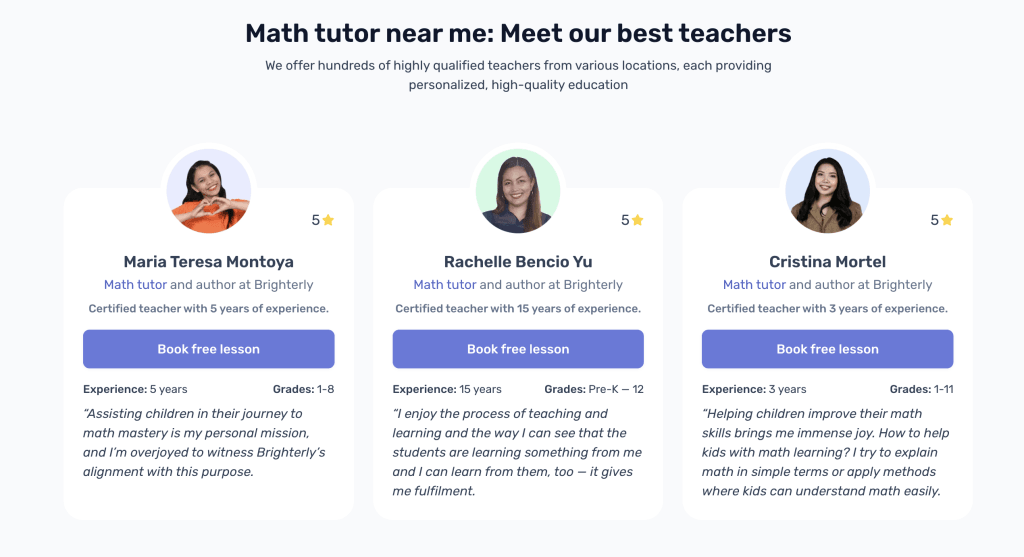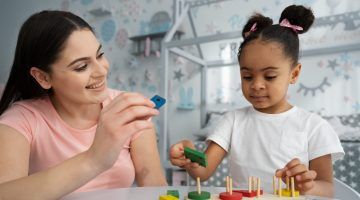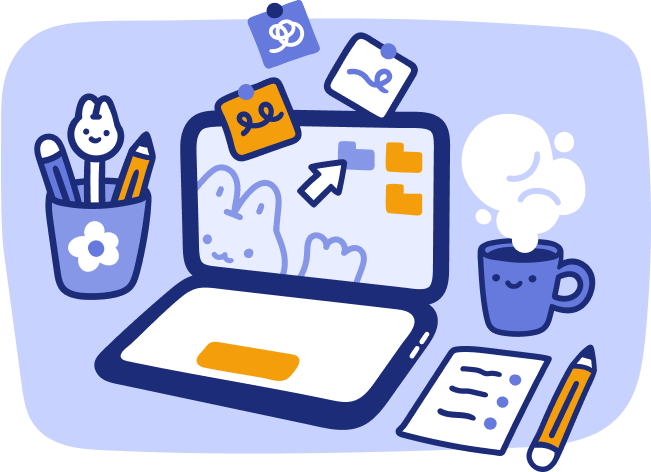When Do Kids Learn Multiplication and How to Get Better At It?
reviewed by Marvi M. Andres
Updated on October 3, 2025
Many wonder when do kids learn multiplication and when is actually the best multiplication age for them to dive into the topic. My teaching experience shows that most kids typically start with it between the ages of 7 and 9. However, not every child finds this step easy. In this guide, you’ll discover how to make multiplication simple, fun, and effective — so your kid actually enjoys it.
Key points:
- The ideal multiplication age is typically considered between 7 and 9.
- Children learn more easily with entertaining activities, illustrations, and humorous examples.
- Learning with a tutor keeps kids motivated and focused, and platforms like Brighterly make multiplication click faster.
When do kids learn multiplication?
Most kids learn multiplication between 2nd and 3rd grade, around ages 7–9. Some parents introduce it as early as 1st grade, while others wait until 3rd grade. Every child learns at their own pace, so the “right time” can look a little different for everyone.
Multiplication age chart
When do students learn multiplication isn’t just about hitting a certain age — it’s about a child being ready. In general, children typically find multiplication easier to grasp once they have a good understanding of addition, numerical patterns, and grouping items. Parents can support by practicing a bit every day or using enjoyable worksheets to develop these abilities.
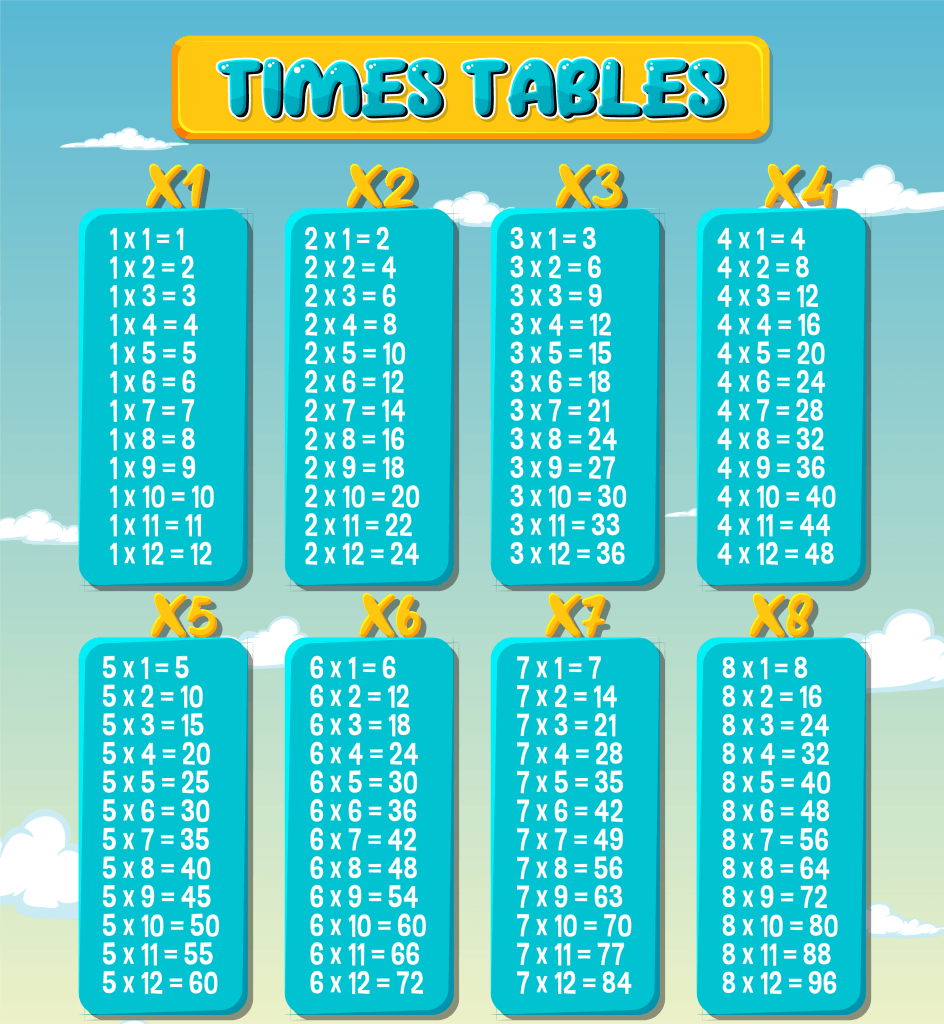
Note: Research indicates that children who practice multiplication using visual aids and real-life examples (like grouping toys or snacks) retain facts faster and perform better in later grades.
How to become better at learning multiplication?
- Try worksheets for step-by-step structured practice
- Use songs or rhymes to remember times tables
- Turn multiplication into a game with cards or dice
- Practice for 10 minutes daily instead of long sessions
- Show real-life examples, like sharing food in groups
Note that mastering multiplication becomes more achievable when children begin learning it at the appropriate age to learn multiplication. The focus should be on making practice enjoyable and regular. Incorporating games, songs, and interactive methods such as counting with toys or snacks makes multiplication an engaging activity for kids.
To explore all the strategies in detail, check How to Teach Multiplication: 16 Best Ways.
Note: According to the National Curriculum for England, students in Year 3 (ages 7–8) are expected to learn multiplication facts for the 3, 4, and 8 times tables and use this knowledge to work out division facts.
Try worksheets for step-by-step structured practice
Worksheets are a simple and effective way to help kids grasp the concept of multiplication. They make learning manageable, allowing children to practice step by step while identifying number patterns and building confidence. Every completed exercise gives them a little sense of pride.
Brighterly multiplication math worksheets
The Brighterly math and reading platform makes multiplication practice feel like a game, not a chore. With 1:1 lessons and a gamified approach, this math program turns study time into playtime — kids often ask for their next session!
Additionally, the service features colorful, and easy-to-follow math worksheets for engaging practice at home and school. Those sheets start with simple exercises that build confidence and understanding, then gradually progress to more challenging tasks at a pace that suits them.
Each activity on these sheets is made to make math fun and hands-on, so kids can see and understand problems one step at a time. Additionally, knowing what grade do you learn multiplication helps parents and teachers choose the right worksheets and activities for their child’s level.
Now, from theory to practice, these are the sheets you can use:
- Grade 2 Multiplication Worksheets — Designed for kids just starting with multiplication, usually around ages 7–8. They use arrays, repeated addition, and visual aids to make learning engaging.
- 2-Digit by 2-Digit Multiplication Worksheets — Best fit the kids who already know the basics. Real-life examples, like adding prices, measuring distances, or grouping items, show when do you learn multiplication in real life.
- Multiplication Facts Worksheets – Focused on memorizing times tables from 0 to 12, these worksheets help kids improve both speed and accuracy. The worksheets also contain small challenges and quick quizzes that help kids see how much they’ve learned.
- Mixed Multiplication Worksheets – A variety of multiplication problem formats, such as word, double-digit, and single-digit problems. These worksheets are perfect for kids at the right multiplication age, encouraging flexible thinking, and improving problem-solving.
By mixing various problem types, these sheets teach kids to switch strategies and think critically about numbers.
Use songs or rhymes to remember times tables
Learning becomes a game when rhythm is added with an upbeat melody or catchy beat. Playfully repeating the songs also aids in their retention of the information. Moreover, singing can help children recall numbers quickly during games or tests.
To make learning even more engaging, parents can even invent amusing phrases or entertaining dances! This extra activity will add movement to your home lessons, helping kids stay both mentally and physically fit.
Turn multiplication into a game with cards or dice
Games make learning enjoyable and interactive for children. So why not let your child enjoy themselves while practicing math at the appropriate multiplication age with tools like cards, dice, or tiny toys?
Indeed, this strategy can make arithmetic more enjoyable and social, especially when we consider games that involve friends and family, or challenge kids to beat their own scores. All in all, using games to practice multiplication frequently creates an enjoyable habit that simplifies complex math.
Practice for 10 minutes daily instead of long sessions
Short, daily multiplication facts practice helps kids remember numbers without feeling overwhelmed. Succeeding in such practices will also boost their confidence with just ten minutes of daily practice. Then, children are more motivated because they can easily observe their growth. Additionally, by doing it daily, they won’t forget what they already know and will get better over time.
Parents can incorporate learning sessions into a basic routine by asking kids to practice multiplication immediately after breakfast or before bed.
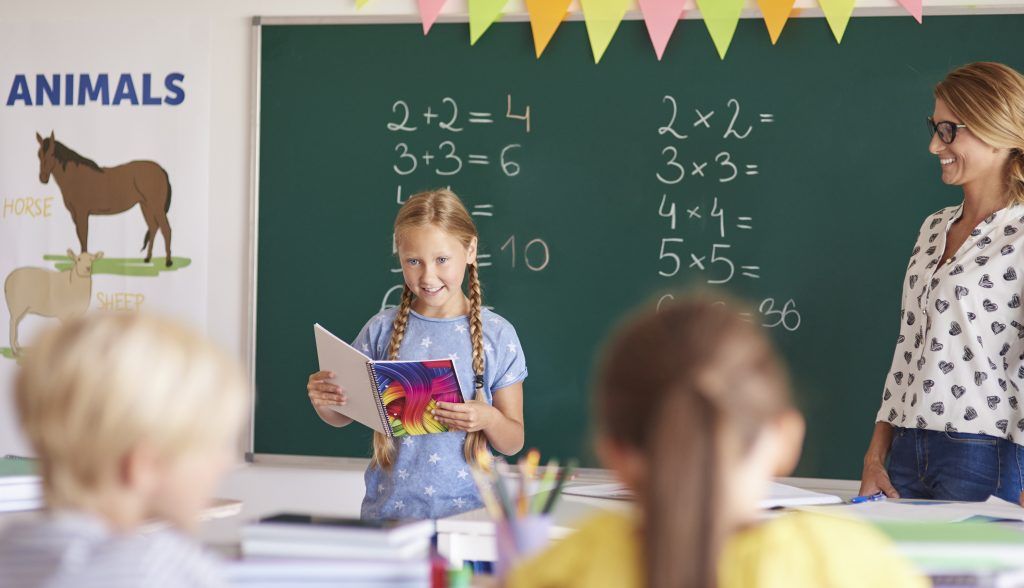
Little girl reading homework in the classroom
Show real-life examples, like sharing food in groups
Relating multiplication to everyday situations helps children grasp its purpose. Toys, snacks, and object organization are just a few examples to consider. With them, youngsters also comprehend the value of math abilities outside of the classroom.
Small tasks, like dividing fruits evenly or figuring out how many candies to bring to a celebration, can be set up by parents, even for the lowest multiplication age. This method increases children’s comprehension and confidence by helping them relate numbers to practical results.
When do kids learn multiplication worksheets?
Multiplication worksheets are typically taught in the second or third grade. They are excellent for practicing times tables, observing number patterns, and boosting arithmetic confidence at this age.
So if you’re wondering at what age should a child learn multiplication, the answer is usually around 7–9 years old, and worksheets make the procedure much simpler. Children may maintain motivation, practice frequently, and develop a solid multiplication foundation by using an organized math software like that available at Brighterly.
Does your children need a math tutor for learning multiplication?
Sometimes multiplication can feel challenging for kids, and worksheets alone aren’t always enough. That’s where Brighterly math tutors step in. They work one-on-one with students during math classes, giving personalized guidance that helps children understand concepts faster and feel confident with numbers. Each session is designed to match the child’s current level, providing hands-on exercises, interactive lessons, and targeted practice.
Brighterly’s tutoring makes learning multiplication fun and interactive by:
- Taking them through each idea step-by-step so that nothing seems overwhelming
- Giving practical advice on how to make time tables easier to memorize
- Taking pride in each little victory to maintain motivation and positive learning
- Allowing kids to go at their own speed while monitoring their development
When do students learn multiplication: Insights and parents’ feedback
Learning multiplication is a big step in a child’s math journey, and it can feel like a whole new world for them. So, at what age do kids learn multiplication? Most kids start diving into the topic between the ages of 7 and 9, when they are comfortable with addition and recognize number patterns.
When children practice times tables through engaging worksheets, games, or hands-on activities rather than just memorizing them, parents often notice that their children retain the information more effectively. Young learners can understand multiplication with a little guidance and real-world examples, such as snack groups or count toys.
Some parents discuss when is the best time to start multiplication — some prefer introducing it in 1st grade, while others wait until 3rd grade. This shows that when do you learn multiplication can vary depending on each child’s readiness and prior skills.
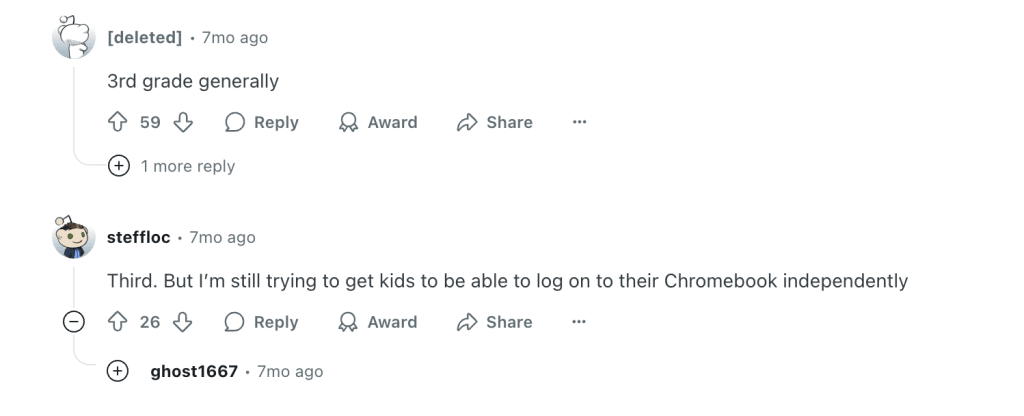
At what age should a child know multiplication tables?
Kids generally start learning multiplication in school around 2nd or 3rd grade, but every child moves at their own pace. Children can begin to learn their multiplication tables gradually, starting with easier numbers like 1, 2, 5, and 10. Introducing them to multiplication in small steps helps avoid overwhelm.
Some tips that help kids master tables include:
- Singing multiplication songs or chants
- Using colorful flash cards or apps
- Playing simple group games that involve counting
If multiplication is taught too early, it might feel confusing or frustrating, so timing is important. Children experience a sense of success as they advance, thanks to worksheets, riddles, and quick exercises that naturally reinforce learning and boost their confidence.
Check progress with math testing
Using math tests is a clever method to determine what your child already understands and what they still need to improve. The engaging and interactive online assessments from Brighterly are tailored to each child’s grade level. Thus, parents may clearly see their child’s strengths and areas for improvement after the test is over.
Is it good to learn multiplication during grade 1?
Learning multiplication during grade 1 may not be the best idea. Instead, first graders usually focus on addition, subtraction, and understanding number patterns. While they might not fully dive into multiplication yet, introducing simple ideas like repeated addition or grouping sets can give them a head start.
When do kids learn multiplication in school? Typically, around 2nd grade, when they’re ready to practice times tables more systematically.
Early exposure in a playful, low-pressure way helps kids feel ready and excited for the multiplication challenges ahead. Even little activities — like counting sets of fruit, toys, or blocks — can build a strong foundation for multiplication skills later on. For more strategies and practical tips, see How to Memorize Multiplication Tables: 17 Tips for Your Kids.
Age to learn multiplication: Conclusion
Multiplication might seem tricky at first, but taking it step by step makes it way easier — and even fun! Start with simple numbers, use games, hands-on activities, and worksheets to practice. Keep sessions short, celebrate little wins, and watch your child gain confidence and enjoy math.
If you want personalized guidance, fun interactive worksheets, and real progress in math, the best choice is Brighterly. Friendly tutors tailor lessons to your child’s level, and engaging multiplication worksheets turn practice into a game. Why wait? Book free lesson and see how things work here!

